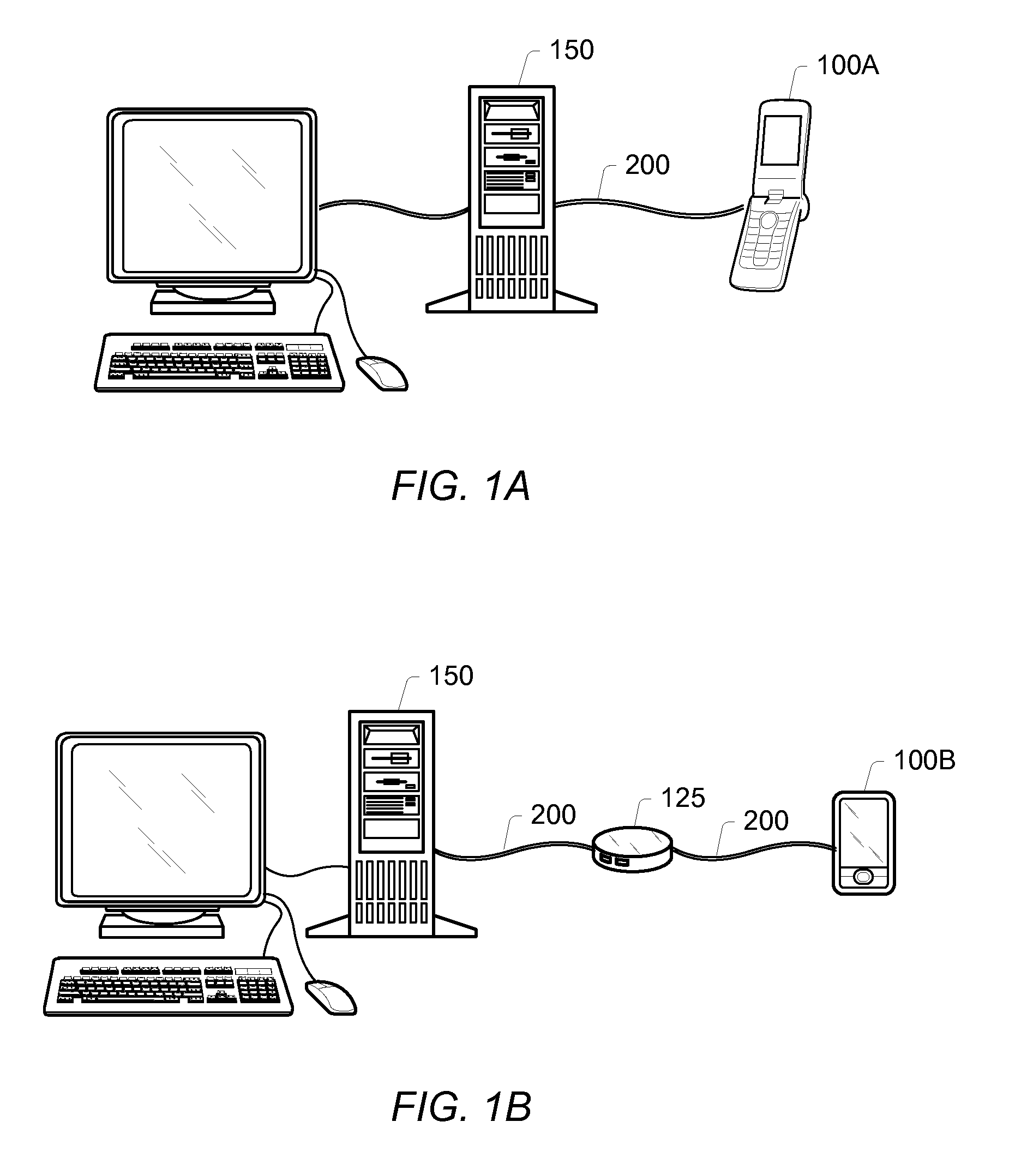Adjusting delivery of current in a connection based on temperature
a technology of current delivery and temperature, applied in the field of connections, can solve the problems of limiting neglect of fact, increasing temperature in the connection, and reducing the current being provided between the two devices, so as to prevent overheating (and resulting failure) of the connection and reduce the current being provided
- Summary
- Abstract
- Description
- Claims
- Application Information
AI Technical Summary
Benefits of technology
Problems solved by technology
Method used
Image
Examples
examples
[0049]The following are examples of the methods described herein.
[0050]In a first example, a power supply is capable of providing 9-36 Vdc at up to 1 amp of current through a cable to a portable device. The portable device is capable of operation with an input voltage of 9-36V, with its input power management being a switch mode power supply (assumed 100% efficient, regardless of input voltage, in this example). The power supply and portable device are ‘matched devices’, e.g. the portable device can operate at any voltage the power supply is able to provide. The temperature of the power supply connector before any current flows to the portable device is 27 deg C. The power supply has a temperature delta limit on its connector of 30 Deg C. The power supply starts providing 9 Vdc to the portable device. The portable device consumes 1 A of current. However, soon after, the power supply connector temperature approaches 57 Deg C., which it detects. At this point the power supply increase...
PUM
| Property | Measurement | Unit |
|---|---|---|
| current | aaaaa | aaaaa |
| temperature | aaaaa | aaaaa |
| input voltage | aaaaa | aaaaa |
Abstract
Description
Claims
Application Information
 Login to View More
Login to View More - R&D
- Intellectual Property
- Life Sciences
- Materials
- Tech Scout
- Unparalleled Data Quality
- Higher Quality Content
- 60% Fewer Hallucinations
Browse by: Latest US Patents, China's latest patents, Technical Efficacy Thesaurus, Application Domain, Technology Topic, Popular Technical Reports.
© 2025 PatSnap. All rights reserved.Legal|Privacy policy|Modern Slavery Act Transparency Statement|Sitemap|About US| Contact US: help@patsnap.com



